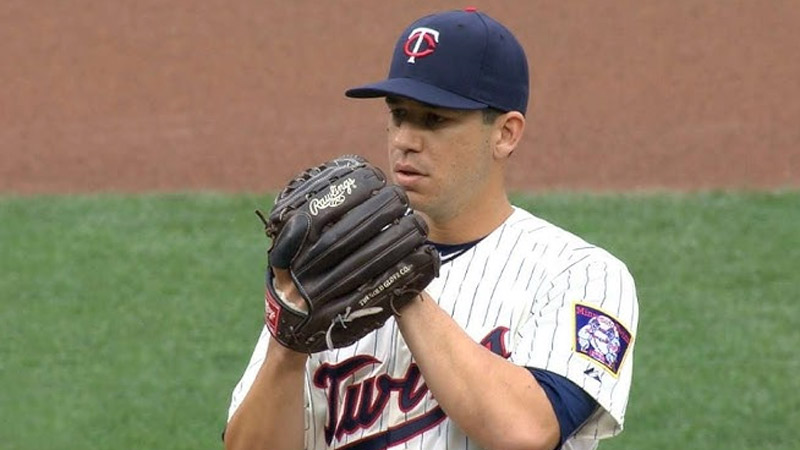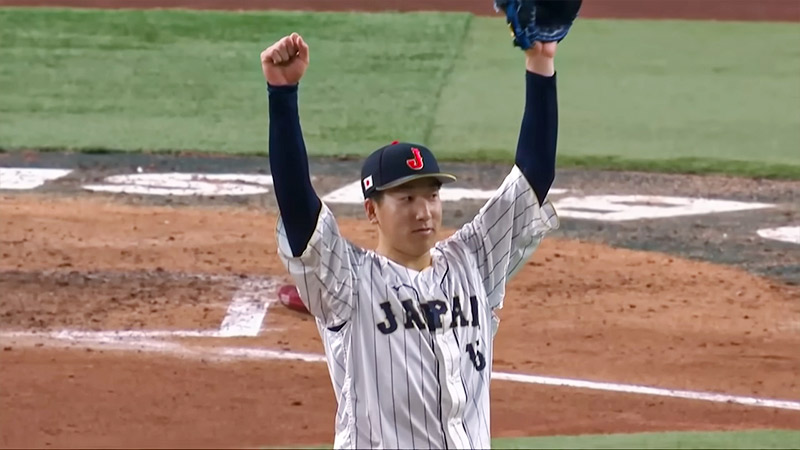In the world of baseball, certain situations call for a special kind of performance from relief pitchers. Enter the save, a statistical category that highlights a pitcher’s ability to preserve a victory for their team.
It is a crucial element of the game and has many aspects on multiple levels. Here, we have tried to bring out some of the functions of save situations in a regular baseball game.
In this article, we will delve into the concept of a save, its criteria, strategic considerations, controversies, and more.
Save Situation
There are some save situations that are needed to be put light on. Try to read through the following section to know further.
Three Criteria for a Save Situation
Enter the Game With a Lead of No More Than Three Runs and Pitch at Least One Inning
To qualify as a save situation, a relief pitcher must enter the game with their team leading by no more than three runs. This criterion ensures that the game is in a relatively close and competitive state, where preserving the lead becomes crucial.
Additionally, the pitcher must successfully pitch at least one full inning to be eligible for a save opportunity. This requirement ensures that the pitcher has a significant role in securing the victory for their team.
Enter the Game With the Tying Run in the on-deck Circle, at the Plate, or on the Bases
Another crucial aspect of a save situation is the presence of the tying run in a threatening position. The relief pitcher must enter the game when the tying run is either in the on-deck circle (the next batter due to bat), at the plate, or on the bases.
This condition adds an element of pressure and urgency, as the opposing team has a legitimate chance of equalizing the score. The relief pitcher’s task is to prevent the tying run from scoring and maintain the lead for their team.
The Pitch at Least Three Innings
While the first two criteria are commonly applied, this third criterion is not as frequently met. If a relief pitcher enters the game with a lead of no more than three runs and successfully completes three innings of pitching, they qualify for a save situation.
This criterion recognizes exceptional performances by relievers who effectively bridge the gap between the starting pitcher and the closer. It often occurs in extra-inning games or situations where the bullpen needs to be preserved.
These three criteria are fundamental for identifying save situations in baseball. It allows fans and analysts to assess the performance of relief pitchers accurately and provides a basis for comparing their achievements across different games and seasons.
Save situations highlight the critical role of relief pitchers in securing victories for their teams, making it a key aspect of the game to appreciate and analyze.
Save Opportunities and Statistics
Check out the following section to get acquainted with some possible save opportunities and statistics on base running in-game.
Role of Relief Pitchers in Save Situations
Relief pitchers are instrumental in save situations as they are responsible for preserving the lead and securing the victory for their team. When a game enters a save situation, it usually means that the starting pitcher has completed their outing, and the game’s outcome hangs in the balance.
Relief pitchers are called upon to navigate high-pressure situations, hold the opposing team at bay, and prevent them from equalizing the score. They often face tough batters and must execute precise pitches to maintain their team’s advantage.
The role of relief pitchers in save situations highlights their ability to perform under pressure and make a significant impact on the game’s outcome.
Recording Saves and Its Significance for Pitchers
Saves are a statistic used to measure the effectiveness and success of relief pitchers in save situations. A pitcher is credited with a save if they meet the criteria mentioned earlier.
Recording saves provides a tangible measure of a reliever’s ability to close out games and secure victories for their team. It highlights their skill, composure, and ability to thrive in high-stakes situations.
Accumulating saves is often an indicator of a pitcher’s reliability and value to their team. Additionally, saves can impact a pitcher’s reputation, salary negotiations, and even their chances of being recognized with awards such as the Rolaids Relief Man Award or induction into the Baseball Hall of Fame.
Save Situations and How They Impact the Game

Save situations can arise in various scenarios throughout a baseball game, and their impact on the game is undeniable. Consider a close game where the starting pitcher has put their team in a winning position.
As the game progresses, the opposing team mounts a comeback, putting the tying run on base. In this critical moment, a relief pitcher is called upon to extinguish the threat and maintain the lead.
If they succeed, their team retains the advantage, and the save is recorded. This situation can have a profound effect on the game’s momentum and outcome.
Conversely, if a relief pitcher fails to secure the save, the game may head into extra innings, potentially altering strategies and exerting additional pressure on both teams.
Save situations can be game-defining moments that test the resilience and skill of the pitchers involved, making them pivotal in the overall narrative of a baseball contest.
Strategic Considerations
Some strategic considerations are discussed in the following section to make you understand the save situations a bit better.
Managerial Decisions in Save Situations
When a save situation arises, managers are tasked with making critical decisions that can significantly impact the game’s outcome. Two key considerations come to the forefront: selecting the right relief pitcher for the situation and managing pitch counts and bullpen usage effectively.
Selecting the Right Relief Pitcher for the Situation
Choosing the appropriate relief pitcher in a save situation is crucial. Managers must assess various factors such as the pitcher’s skill set, recent performance, matchups against the upcoming batters, and their ability to handle pressure.
They may rely on statistical analysis, scouting reports, and their own intuition to make informed decisions. Picking the right pitcher enhances the team’s chances of securing the save and ultimately winning the game.
Managing Pitch Counts and Bullpen Usage
In save situations, managers must strike a balance between maximizing the effectiveness of their relief pitchers and preserving their arms for future games.
They must monitor pitch counts and consider factors such as recent workload and rest days. Making wise bullpen usage decisions involves understanding the strengths and limitations of each pitcher and strategically deploying them to navigate through crucial innings.
This requires careful planning and an understanding of the long-term implications for the bullpen’s overall performance.
Tactics Employed by Relief Pitchers to Secure Saves
Relief pitchers employ specific tactics when entering save situations, aiming to shut down the opposing team and preserve the lead. These tactics revolve around pitch selection and approach, as well as effectively managing the pressure and unique game situations they encounter.
Pitch Selection and Approach
Relief pitchers must carefully choose their pitches to exploit the weaknesses of the opposing batters. They analyze scouting reports and consider each batter’s tendencies and preferences.
Pitchers may rely on their repertoire of pitches, including fastballs, breaking balls, and changeups, to keep hitters off balance and induce weak contact or strikeouts.
Effective pitch selection and execution are vital in securing outs and preventing the opposing team from mounting a comeback.
Dealing With Pressure and Game Situations
Save situations often come with heightened pressure, and relief pitchers must exhibit mental toughness and composure. They need to stay focused and execute their pitches despite the challenging circumstances.
Relief pitchers must adapt to the specific game situations they encounter, such as pitching with runners on base, protecting a one-run lead, or facing the heart of the opposing team’s lineup.
The ability to remain calm and execute pitches in high-pressure situations is paramount for success.
By examining the strategic considerations in save situations, including managerial decisions and the tactics employed by relief pitchers, we gain a deeper understanding of the intricacies involved in navigating these crucial moments of the game.
These considerations and tactics underscore the importance of preparation, decision-making, and execution in the pursuit of securing saves and ultimately achieving victory in baseball.
Historical Context and Evolution
All baseball enthusiasts should know about the historical context and evolution of save situations in a standard baseball game. Check some of the points in the immediate phase.
Development of the Save Rule in Baseball

The save rule was introduced to recognize and quantify the contributions of relief pitchers in preserving leads and closing out games. The modern definition of a save was established in 1969, with specific criteria determining when a relief pitcher qualifies for a save.
This rule change reflected the growing importance of bullpen arms and their impact on the outcome of games. Understanding the origins and rationale behind the save rule provides insight into its significance and role in baseball.
Notable Pitchers and Their Save Records
Throughout baseball history, several pitchers have excelled in the art of saving games. Notable names like Mariano Rivera, Trevor Hoffman, and Billy Wagner have amassed impressive save records and left a lasting legacy in the sport.
Examining their accomplishments sheds light on the impact of dominant closers and their ability to secure victories for their teams. These pitchers’ performances serve as a benchmark for future relievers and contribute to the historical context of the save in baseball.
Changes and Modifications to the Save Rule Over Time
The save rule has undergone modifications and adjustments since its inception, reflecting an evolving understanding of relief pitching strategies. Over the years, the criteria for earning a save have been refined and expanded, taking into account different game situations and roles within the bullpen.
These changes have aimed to capture the nuances of relief pitching and adapt to the ever-changing landscape of the game. Exploring the modifications to the save rule provides insights into baseball’s continuous efforts to accurately measure and value the contributions of relief pitchers.
The historical context and evolution of the save in baseball demonstrate the sport’s willingness to adapt and recognize the crucial role relief pitchers play in securing victories.
Controversies and Debates
There are some controversies and contradictory opinions on save citation conditions of a baseball game. Check them out below.
Criticisms and Debates Surrounding the Save Statistic
The save statistic has faced scrutiny for its limitations and potential flaws in accurately measuring a relief pitcher’s effectiveness. Critics argue that the save statistic relies heavily on arbitrary criteria and fails to account for situational context and individual performance.
Some argue that the emphasis on saves may lead to suboptimal managerial decisions, such as using the best reliever exclusively in save situations, potentially neglecting critical game moments.
Additionally, debates have arisen regarding the exclusion of pitchers who enter tie games and preserve the deadlock. Exploring these criticisms and debates sheds light on the potential shortcomings of the save statistic.
Alternative Metrics to Evaluate Relief Pitcher Performance
In response to the criticisms surrounding saves, alternative metrics have emerged to provide a more comprehensive evaluation of relief pitcher performance.
Metrics such as Win Probability Added (WPA), Expected Runs Added (RE24), and Leverage Index (LI) aim to assess the impact a reliever has on the outcome of a game beyond the binary nature of saves.
These metrics consider factors such as the game situation, inherited runners, and the quality of opposition faced. By considering a broader range of factors, these alternative metrics offer a more nuanced understanding of a relief pitcher’s contributions.
Exploring these alternative metrics provides insights into the ongoing efforts to develop more sophisticated measures of relief pitcher performance. Controversies and debates surrounding the save statistic have prompted discussions about the effectiveness and limitations of this traditional metric.
The exploration of criticisms and debates sheds light on the potential biases and shortcomings of the save statistic. Moreover, the introduction of alternative metrics highlights the ongoing evolution in evaluating relief pitcher performance, reflecting the baseball community’s quest for more accurate and comprehensive measures.
Notable Relief Pitchers and Their Save Records
| Relief Pitcher | Total Saves |
| Mariano Rivera | 652 |
| Trevor Hoffman | 601 |
| Lee Smith | 478 |
| Billy Wagner | 422 |
| Francisco Rodriguez | 437 |
FAQs
Are there any limitations on who can be credited with a save?
Yes, there are certain criteria that a relief pitcher must meet in order to be credited with a save. They must enter the game with a lead of no more than three runs, pitch at least one inning, and either face the tying run or pitch at least three innings.
Can a starting pitcher earn a save?
Generally, starting pitchers are not eligible for saves because they are expected to pitch a significant portion of the game as a starter. However, in rare cases, a starting pitcher who is removed from the game and later comes back in relief may be credited with a save if they meet the save criteria.
Can a blown save affect a pitcher’s statistics?
Yes, if a relief pitcher enters the game with a lead but fails to maintain it, resulting in the opposing team tying the game or taking the lead, it is considered a blown save.
A blown save can negatively impact a pitcher’s statistics, including their earned run average (ERA) and overall performance.
What is the all-time record for saves in a single season?
The all-time record for saves in a single season is held by Francisco Rodriguez, who recorded 62 saves in the 2008 season while playing for the Los Angeles Angels.
This broke the previous record of 57 saves set by Bobby Thigpen in 1990.
Are there any alternative statistics to evaluate relief pitchers’ performance?
Yes, besides saves, there are alternative metrics that are used to assess relief pitchers’ performance, such as strikeouts per nine innings (K/9), earned run average (ERA), walks plus hits per innings pitched (WHIP), and Fielding Independent Pitching (FIP).
These metrics provide a more comprehensive view of a pitcher’s effectiveness beyond just the number of saves they accumulate.
End Call
A save situation in baseball refers to a specific scenario where a relief pitcher enters the game to protect a lead of three runs or fewer, and successfully finishes the game without surrendering that lead. The save statistic recognizes the efforts of relief pitchers in preserving victories for their team.
It is an important aspect of the game that highlights the significance of strong bullpen performances and the ability to close out games. Save situations are crucial for both players and fans, as it adds excitement and tension to the final moments of a baseball game.
Ultimately, the save rule contributes to the strategic and competitive nature of the sport, making it a key element in the world of baseball.
Don’t forget to share your thoughts with us here. Thank you for your patience.







